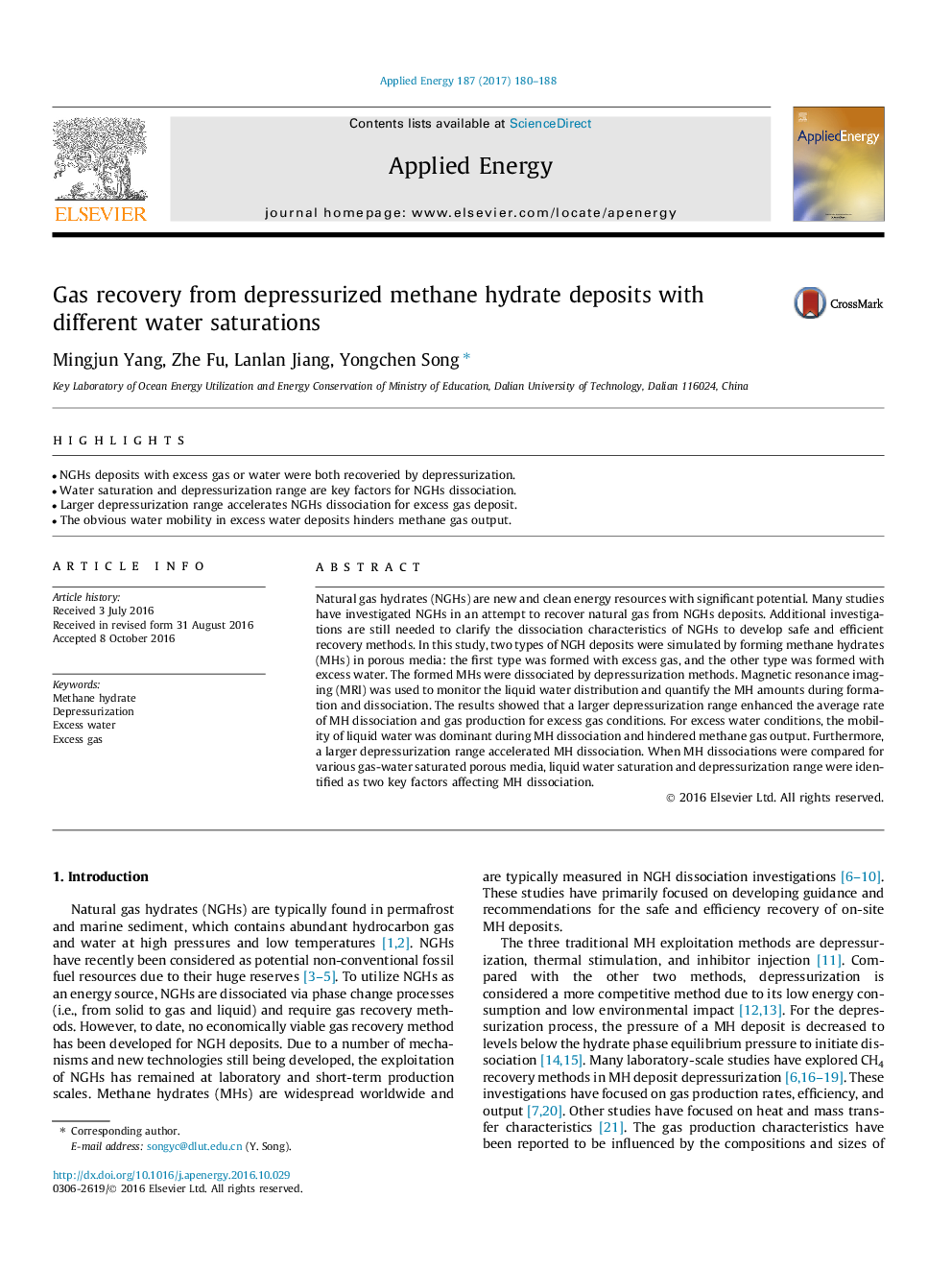| Article ID | Journal | Published Year | Pages | File Type |
|---|---|---|---|---|
| 4916671 | Applied Energy | 2017 | 9 Pages |
Abstract
Natural gas hydrates (NGHs) are new and clean energy resources with significant potential. Many studies have investigated NGHs in an attempt to recover natural gas from NGHs deposits. Additional investigations are still needed to clarify the dissociation characteristics of NGHs to develop safe and efficient recovery methods. In this study, two types of NGH deposits were simulated by forming methane hydrates (MHs) in porous media: the first type was formed with excess gas, and the other type was formed with excess water. The formed MHs were dissociated by depressurization methods. Magnetic resonance imaging (MRI) was used to monitor the liquid water distribution and quantify the MH amounts during formation and dissociation. The results showed that a larger depressurization range enhanced the average rate of MH dissociation and gas production for excess gas conditions. For excess water conditions, the mobility of liquid water was dominant during MH dissociation and hindered methane gas output. Furthermore, a larger depressurization range accelerated MH dissociation. When MH dissociations were compared for various gas-water saturated porous media, liquid water saturation and depressurization range were identified as two key factors affecting MH dissociation.
Related Topics
Physical Sciences and Engineering
Energy
Energy Engineering and Power Technology
Authors
Mingjun Yang, Zhe Fu, Lanlan Jiang, Yongchen Song,
